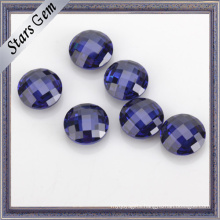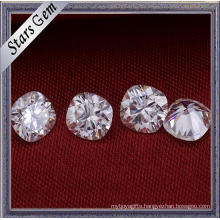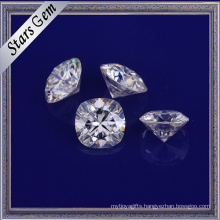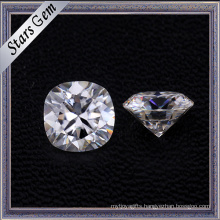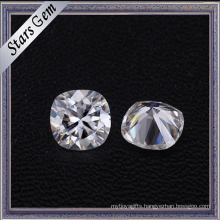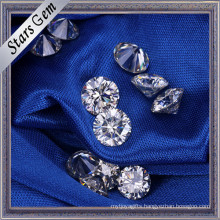Chlorination roasting of gold-containing arsenic pyrite
2021-05-17
In order to determine as a gold - Effect chlorination roasting arsenic sulphide concentrate preparation stage cyanidation further studied the sequence and structure of a phase change transition arsenic pyrite is produced during the heat treatment, and with a noble metal sulfides and The physico-chemical properties of the calcined product.

Comparison (FIG. 1) of gaseous chlorine kinetic curves generated with silver salt quantitative method, oxidation of sulfide sulfur in an amount determined by iodine titration, arsenopyrite oxidation - chlorination roasting process and in a single - The initial temperature of the reaction in the oxidative roasting process is completely the same, and the FeAsS decomposition temperature zone is completely consistent in the above two cases, etc., and it can be confirmed that the decomposition of the solid chlorine agent in the chlorination roasting is not the result of the solid phase reaction. It is due to its interaction with sulfur dioxide generated during the oxidation of sulfides:
2NaCl+SO 2 +O2=Na 3 S0 4 +Cl 2
The presence of a gaseous active chlorine agent enhances the decomposition process of the dense structure of the original sulfur: the iron in the arsenopyrite needs not only the oxidation of oxygen in the air, but also the effective chlorination to further decompose the chloride and generate Porous oxide. Therefore, the degree of oxidation of the sulfide in the oxidative chlorination roasting process is more sufficient than in the single oxidation roasting. [next]
The phase composition of the calcined solid product by X-ray phase analysis of the cooled sample by the YPC-50HM instrument shows that the sulfide type sulfur plays a special important role in the decomposition process of the solid chlorine agent. Therefore, the strontium iron (FeS) phase which was first discovered and rapidly disappeared during the oxidized roasting of arsenic pyrite was not fixed.
Under oxidation-chlorination roasting, the first product after decomposition of arsenopyrite is magnetite (Fe 2 O 3 ). When the calcination temperature slightly exceeds 600 ° C, it will completely transform into the final phase of hematite (α-Fe 2 O 3 ). When chlorine is present, only one compound is fixed during the oxidation of arsenic in arsenite, ie iron arsenate, which is not the φ1 phase as described in the literature (the peak value is d=3.02~ 311A) The arsenate of iron of that composition.

The diffraction pattern analysis shows that the φ1 phase exists only in the crystallites with magnetite (Fe 3 O 4 ). This arsenate may be a composite salt of magnetite and a non-volatile arsenic pentoxide of the above composition, Fe 3 O 4 • As 2 O 5 or Fe 3 O 4 . This compound is the most stable of all iron arsenates in chlorine media. It can only be converted from magnetite to hematite after decomposition.
The phase transition of arsenic pyrite during chlorination-reduction calcination is similar to that of oxidative-chlorination roasting. In this case, the carbon reduction added to the charge causes the magnetite phase to exist for a longer period of time (in the temperature range of 700 ° C). This indicates an increase in the amount of iron arsenate in this temperature range.
The mechanism of decomposition of arsenopyrite during chlorination roasting is shown in the figure below (the temperature range of each phase during chlorination-reduction roasting is indicated in parentheses):
 [next]
[next]
The gold symbiotic with the arsenic pyrite interacts with the oxidized-chlorinated roasting product of FeAsS at the moment when the sulfide begins to decompose. Three new products appeared on the surface of the gold particles: a reddish brown film (below 600 ° C), a black dense film (below 900 ° C) and a white deposit (in the range of 600-900 ° C). After studying the surface film with a miniature X-ray spectroscopy detector ("cameca") and X-ray phase analysis, the composition of the surface film can be determined; that is, iron arsenate (the peak value is 3.17A), iron oxide (mainly hematite Fe 2 O 3 ) and silica. However, in any case, gold itself is a metal without chemical changes.
The study of gold structure by mineral phase analysis showed that when the temperature did not reach 700 °C, when the arsenate, hematite and silica films were not too serious for the gold-coated fruit, the structure of gold was porous. When the calcination temperature is raised to 800 ° C, the metal is condensed, and the amount of gold metal Beads is significantly increased, and the surface of the metal beads is largely covered by the newly formed slag shell. If the calcination temperature is increased again, the diamond is completely melted, condensed and covered by the dissolved glassy deposit. As a result, the reaction surface area is greatly reduced.
The calcination obtained by the oxidative cyanidation calcination at a higher temperature causes the slower rate of gold conversion to a solution during the subsequent cyanidation treatment (Fig. 2). In general, oxidative-chlorination roasting is more promising than single oxidizing roasting. This is because the presence of the chlorinating agent can eliminate the "thermal passivation" phenomenon which may occur due to the metal impurities of the gold particles and the chlorination of the surface oxide film. Therefore, adding enough chlorinating agent (about 3% by weight of the sulfide) to carry out the oxidation-chlorination roasting of the calcined cyanide, the recovery rate of gold to solution is higher than that of cyanide after single oxidation roasting Turn. However, the oxidative chlorination roasting method has the disadvantage that gold may be lost to the gas phase in the form of volatiles during chlorination. The initial temperature of gold chlorination is 700 ° C (Figure 3), and the amount of volatiles per unit is about 0.3 mg / cm 2 / hour. If the calcination temperature is increased to 800 ° C, the chlorination rate can be increased to 4 to 6 mg / cm 2 • hour. Increasing the consumption of chlorinating agents will have a similar effect. The optimum conditions for the oxidation-chlorination roasting of gold-arsenic concentrate are as follows: the calcination temperature is 600-650 ° C, and the NaCl addition amount is 3 to 5% of the concentrate weight.
When the gold-containing arsenopyrite is subjected to chlorination-reduction calcination, the highest number of peaks of the arsenate surface film forming iron on the gold particles move toward some higher temperature. Carbon has a protective effect on the chlorination of metal impurity oxides on the gold surface. This is also an additional factor in the chlorination-reduction roasting process. Because the oxides of metal impurities play an important role in the appearance of "thermal purification." These conditions lead to a decrease in the rate of gold dissolution after calcination at the above-mentioned oxidation-chlorination calcination temperature (Fig. 4).

However, when a sufficient amount of reducing agent (3% of the weight of FeAsS) is present in the chlorination calcined charge, it is practically possible to prevent the gold from volatilizing into the gas phase. This allows calcination at higher temperatures and greatly increases the rate of chlorination of gold. At this time, the gold which has been chlorinated can be instantaneously reduced and the regenerated metal is separated. In this regenerated metal, a thin film of a non-ferrous metal deposit and an impurity thereof which are extremely fine needle-like crystals on the surface of the primary metal and the metal bead or the surface of the carbon residue have been removed. The formation of an emerging highly developed reaction surface can dramatically increase the rate at which gold is transferred to the cyanide solution after calcination of the gold-containing arsenopyrite under the enhanced chlorination temperature.
Therefore, the difference between chlorination-reduction calcination and oxidative-chlorination roasting is that the optimum temperature of the former should be slightly higher, that is, between 800 and 900 °C.
Conclusion Under the cyanidation roasting condition of gold arsenic concentrate, the optimum conditions of chlorination roasting were determined through the study of the decomposition mechanism of arsenic pyrite, so as to ensure the maximum recovery of gold in the next step of cyanating.
Our Hematite Beads is good in quality and competitive in price. We are manufacturer and supplier of Hematite Beads/Jewellery Beads following your specific requirement. We are looking forward to your E-mail and establishing cooperative relationship with you! We would provide professional Hematite Beads with good services for you!
Hematite meaning and properties
Hematite is used to improve relationships. If you need your personal relationship to be better, carry a hematite with you always.
The name comes from the Greek word for blood. It has been used as an amulet against bleeding, and so is known as the "blood stone". When arranged like the petals of a flower, it is referred to as the "iron rose". Native American folklore states that war paint made from hematite will make one invincible in battle. People in the eighteenth and nineteenth centuries wore hematite jewelry during mourning.
Scientists of the Mars Exploration Rover Project believe that deposits of hematite ono Mars .may help prove whether large amounts of liquid water ever flowed on Mars' surface. They say that where water was, life may have had a chance to thrive as well.Hematite is good for increasing intuition. In jewelry it is best in a ring worn on the left hand.
Healing properties of Hematite
Hematite stimulates iron absorption in the small intestine, which in turn improves oxygen supply to the body. It can be in direct contact with the skin, but results in inflammation for some people, so test it carefully on yourself before use.
Sources of Hematite
Brazil is the most important source of hematite. Other sources include: China, Canada, England, and Germany.
Hematite Round Beads, Natural Hematite Beads, Hematite Star Beads, Wholesale Magnetic Hematite Beads, Black Hematite Beads, Faceted Hematite Beads
Joya Gift Co., Limited http://www.joya-jewelry.com
